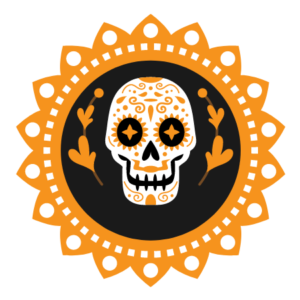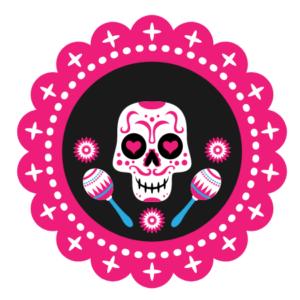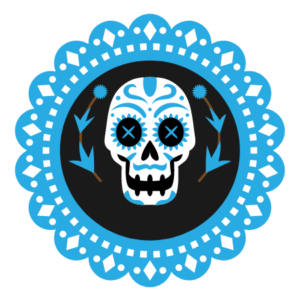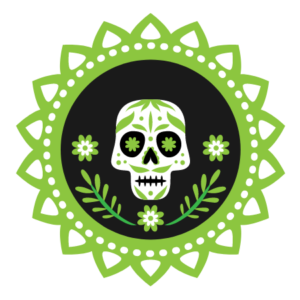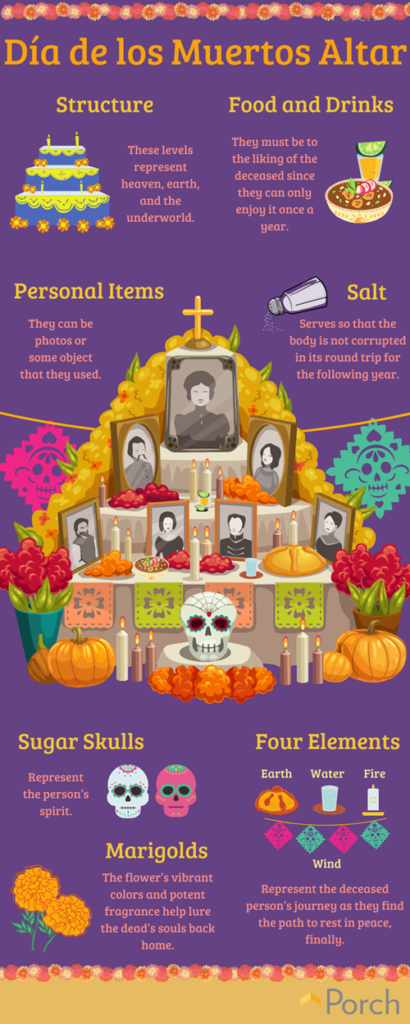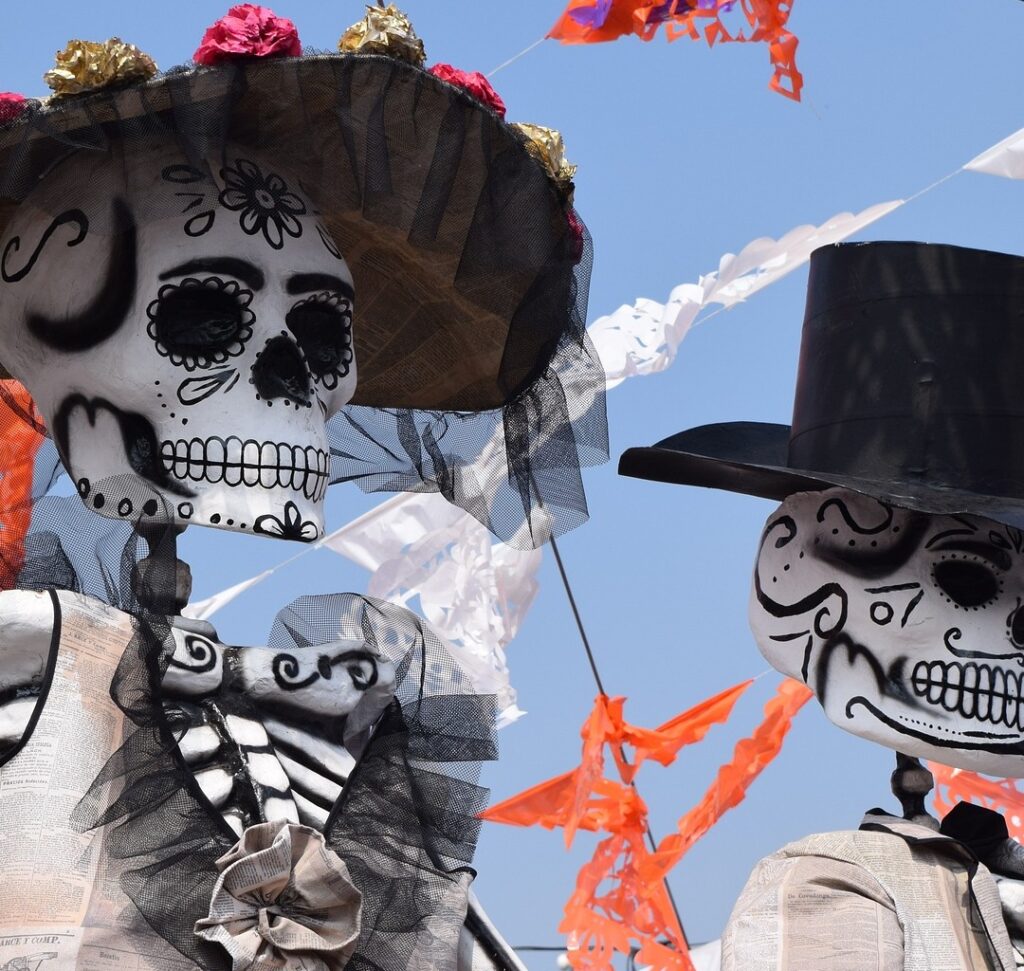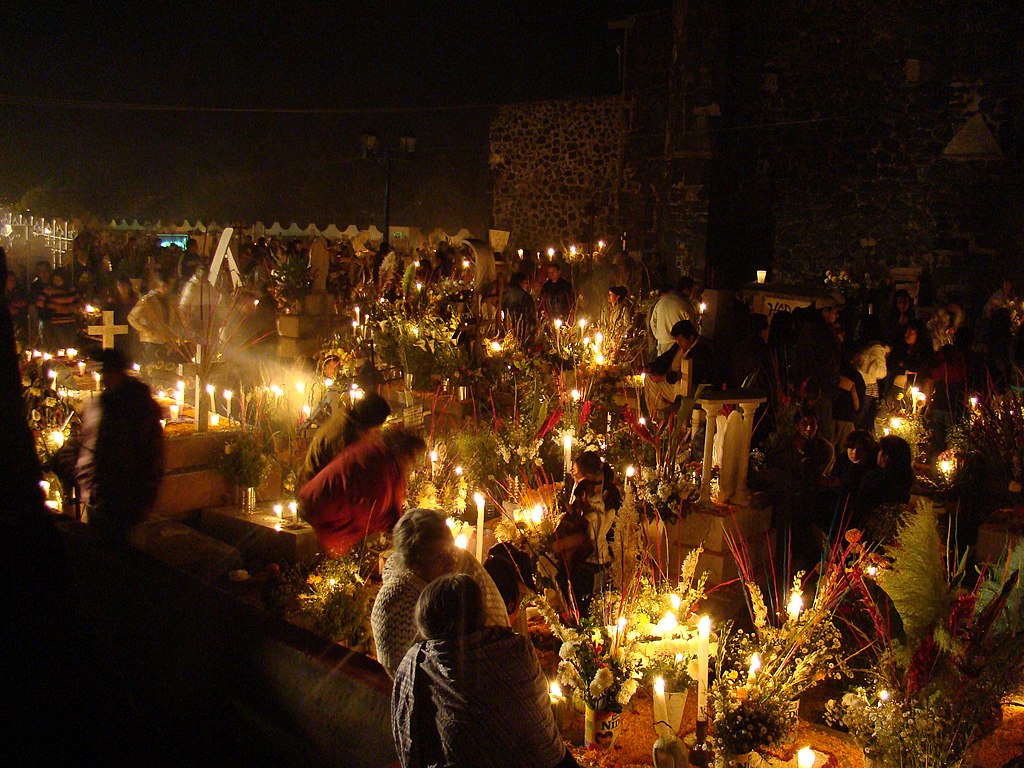Day of the Dead in Mexico City: The Ultimate Guide
Do you want to discover what is the day of the dead?
Do you want to know the traditions (food and customs)?
Or are you looking for activities for this day?
Keep reading this article to know what is the Day of the Dead, its history, interesting facts, and amazing activities to experience in Mexico City.
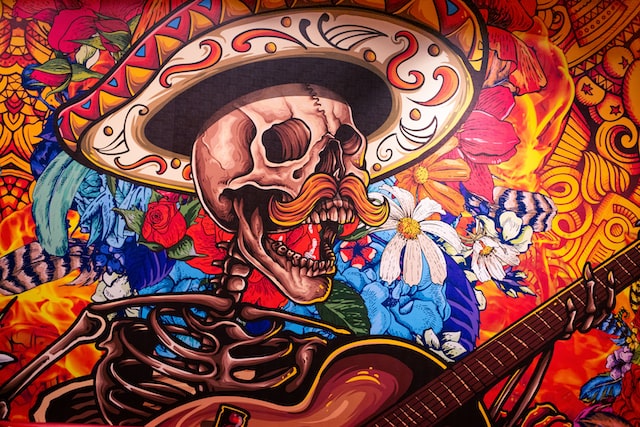
Contents
Meaning and origin
Mexico celebrates the Day of the Dead or Dia de Muertos every November 1st and 2nd. This beautiful holiday aims to remember deceased loved ones through different activities.
The Day of the Dead comes from the mixture of two traditions: Mexican pre-Hispanic and European Catholic.
Before the Spaniards arrived in the region we know today as “Mexico”, there was already the cult of the dead by different cultures such as the Maya, the Mexica, and the Purepecha.
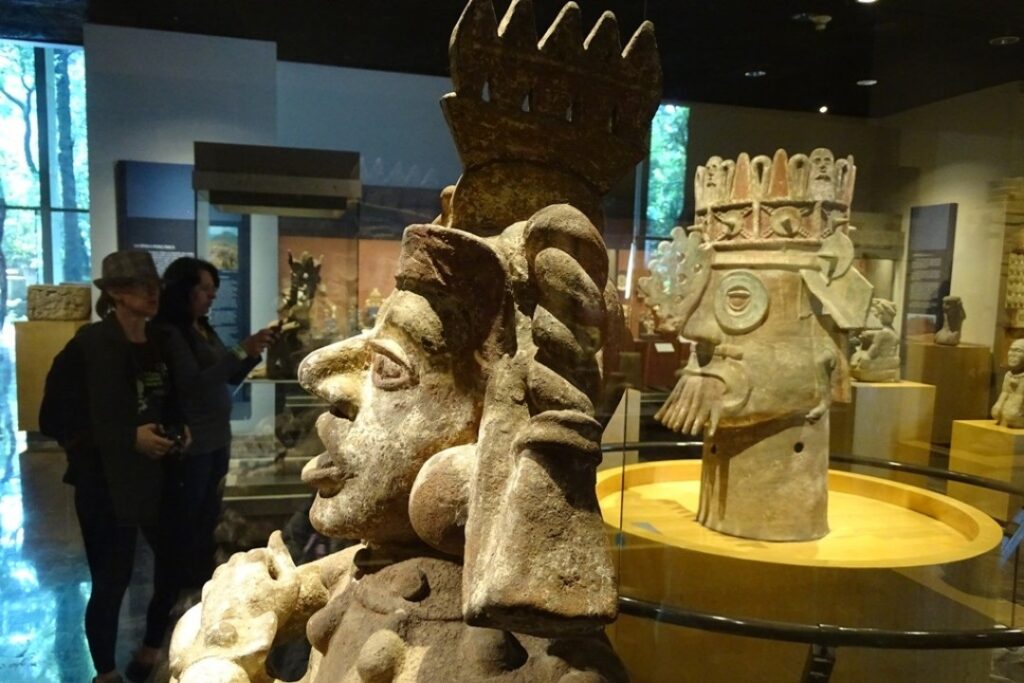
The worship rendered by the Mexica is one of the most famous among Mesoamerican cultures. These cultures used to have two important celebrations to venerate the dead: Miccailhuitontli and Hueymiccailhuitl.
The holiday that became the Day of the Dead commemorates the ninth month of the Mexica solar calendar, which was celebrated throughout the month.
The ninth-month Tlaxochimaco (birth of flowers), was dedicated to Huitzilopochtli. Families held a solemn vigil, cooked in remembrance of the dead and the next day placed the food on the tombs.
However…
the Day of the Dead, as we know it today, is a deeper look at the syncretism that took place with the arrival of Europeans to Mexican lands. For instance, the Mexica believed that when a person died, his spirit traveled to the underworld called the Mictlan.
Then, the dead had to start a long crossing, and on the anniversary of their death, every year an altar would be made with offerings that would help them on their journey. For example, objects that belonged to them, food, and their favorite drink could be placed on the altar.
Additionally, people used to bury a little Xoloitzcuintle dog next to him to help him cross over and be a guide before he came to rest for the rest of his afterlife.
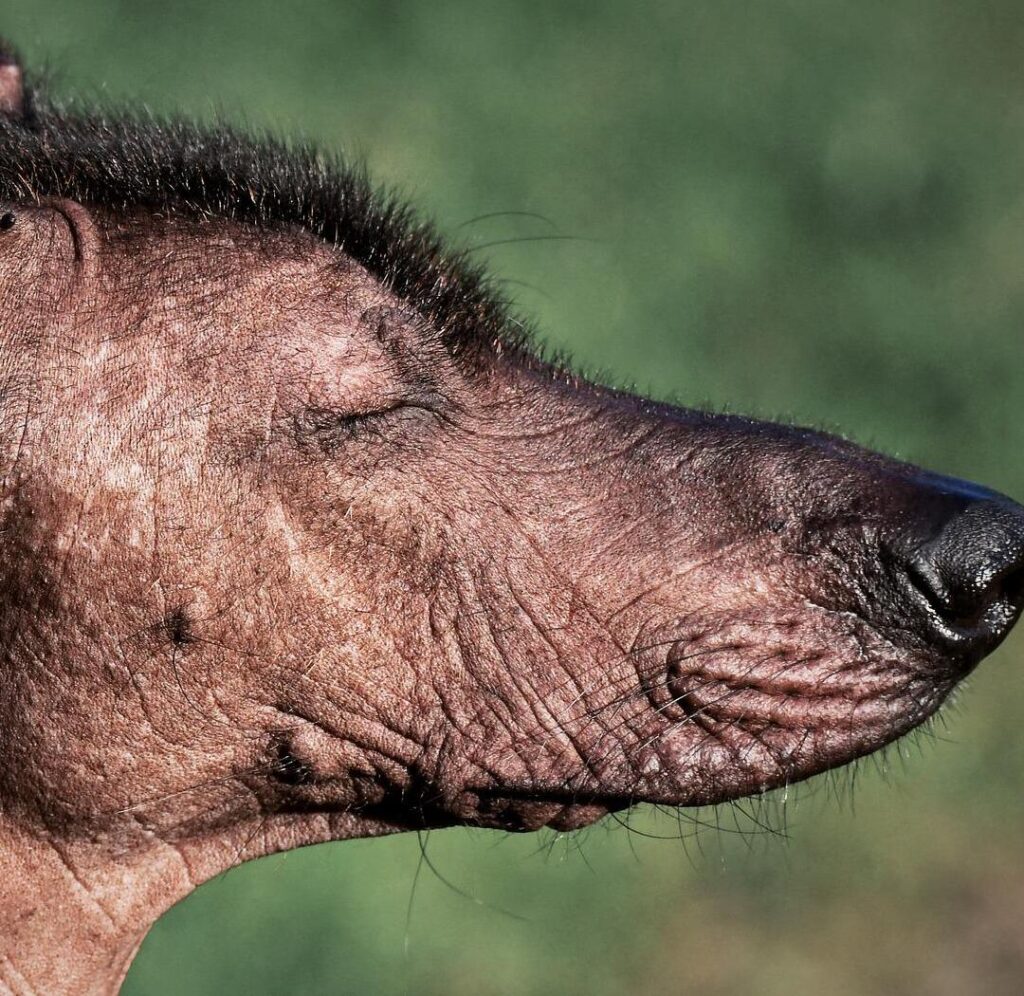
Also…
in the past, no date coincided exactly with November 2nd, which is the official date of All Souls’ Day. However, Spain did commemorate All Saints’ Day on November 1st, and on November 2nd, the Feast of the Faithful Departed.
In Spain, people blessed the food to be eaten by the saints and prayed for the souls of the dead to come out of purgatory. When the Spaniards arrived in Mexico, the process of syncretism began, when two different cultures merged.
Later…
in the 18th century, the Day of the Dead had already been established. And in the 19th century, on November 1st, 1821, the City Council of Mexico City made the Day of the Dead official as a great holiday!
Food and customs
After the Day of the Dead was declared an official holiday, people began to gather outside the Metropolitan Cathedral in Mexico City’s Zocalo to pray and eat.
Several food stalls and activities were starting from November 1st until November 2nd.
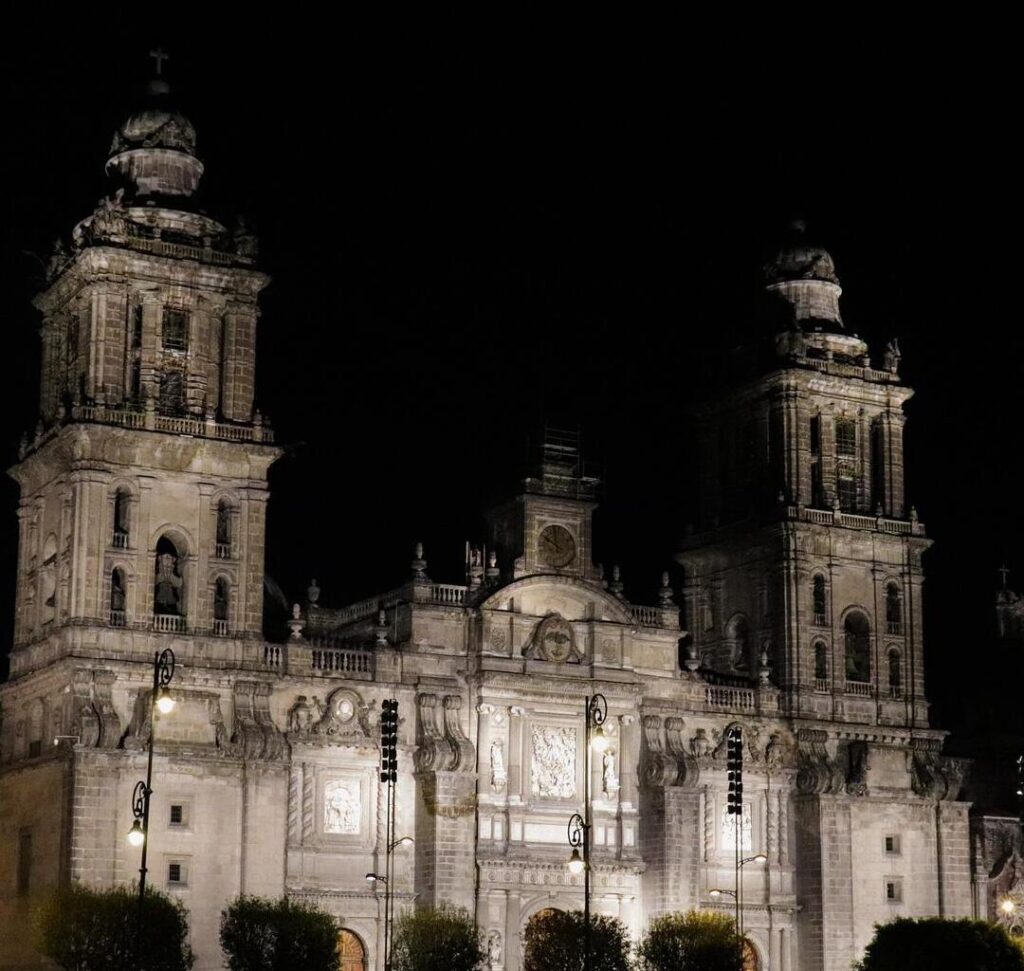
The dead used to be buried in churches, but when an epidemic hit in 1833, a cholera epidemic swept through Europe. Because of this, the dead were ordered to be taken to cemeteries outside the city, even in Mexico.
Actually…
Due to the duration of the walk, people carried a lot of food, such as bread, drinks like atole and coffee, and more food that their deceased relative would like.
Check out our post: Traditional Food of Mexico (Top 20 Dishes)
This custom prevails in many states of Mexico. For example, in Michoacan, all the cemeteries still have very impressive food parties. In the southern part of Mexico City, these wonderful and colorful customs are also carried out.
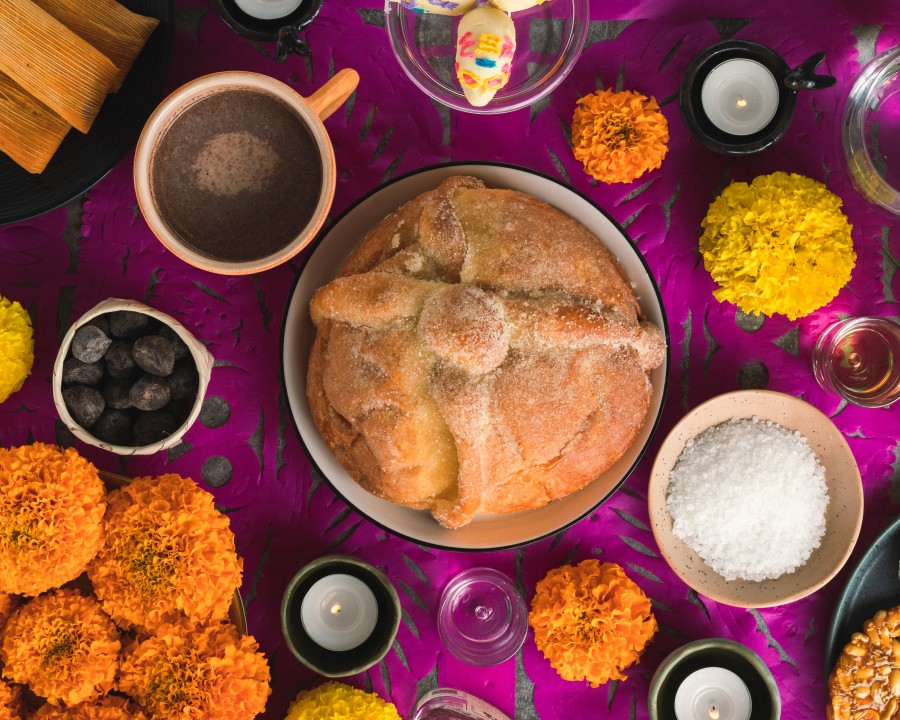
Day of the Dead vs Halloween
There are several differences between these two celebrations, however, you can notice similarities and things that make them both very special and unique.
Halloween
As we said before, Samhain, the day of the harvest, was on October 31. On that date, when time becomes darker, the wall that separates the living from the dead disappears completely.
It was a great custom to make offerings of the harvest for the dead, to dress up, and to make huge bonfires.
Then…
When Christianity spread throughout Europe there was already a celebration of All Saints. However, in the year 741 Pope Gregory II moved this celebration to October 1st to make it coincide with the day before the Celtic Samhain.
From here, the famous All Saints’ Eve was born. Later in the Anglo-Saxon world, it would be the famous Halloween.
It is said that this date is related to the Roman holiday Feralia. Here too, the dead were remembered and offerings of salt, bread, and precious flowers were brought to them and decorated unimaginably.
Nowadays, Halloween has a different tinge due to the pop culture that Hollywood created with great horror classics. Even so, the tradition of its legends such as the legend of Stingy Jack or the tradition of the famous Trick or Treat remains.
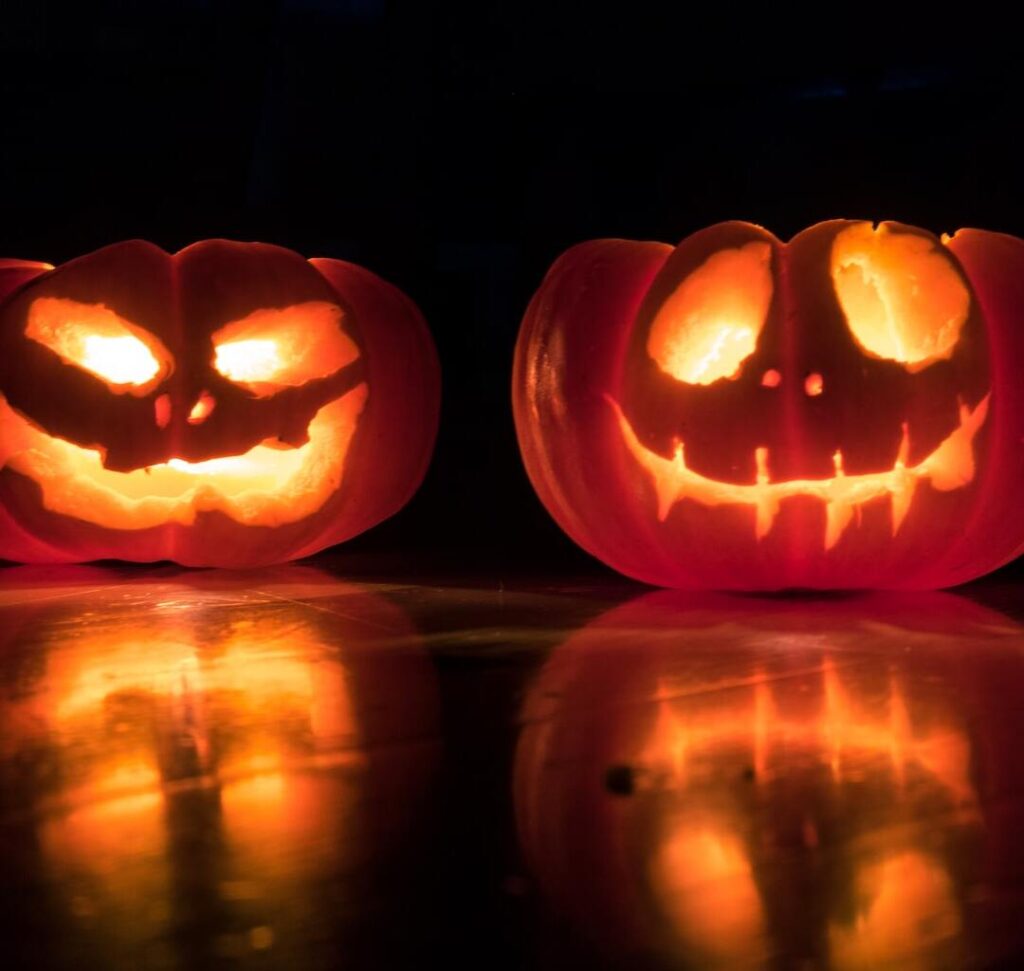
Day of the Dead
When the Spaniards arrived in Mesoamerica in the 16th century, they brought the celebration of All Saints’ Day and All Souls’ Day. Both celebrations have an enormous syncretism full of history, culture, and tradition.
Also, you can see the resemblance with Feralia, specifically due to the Roman conquest of the Hispanic zone a thousand years ago.
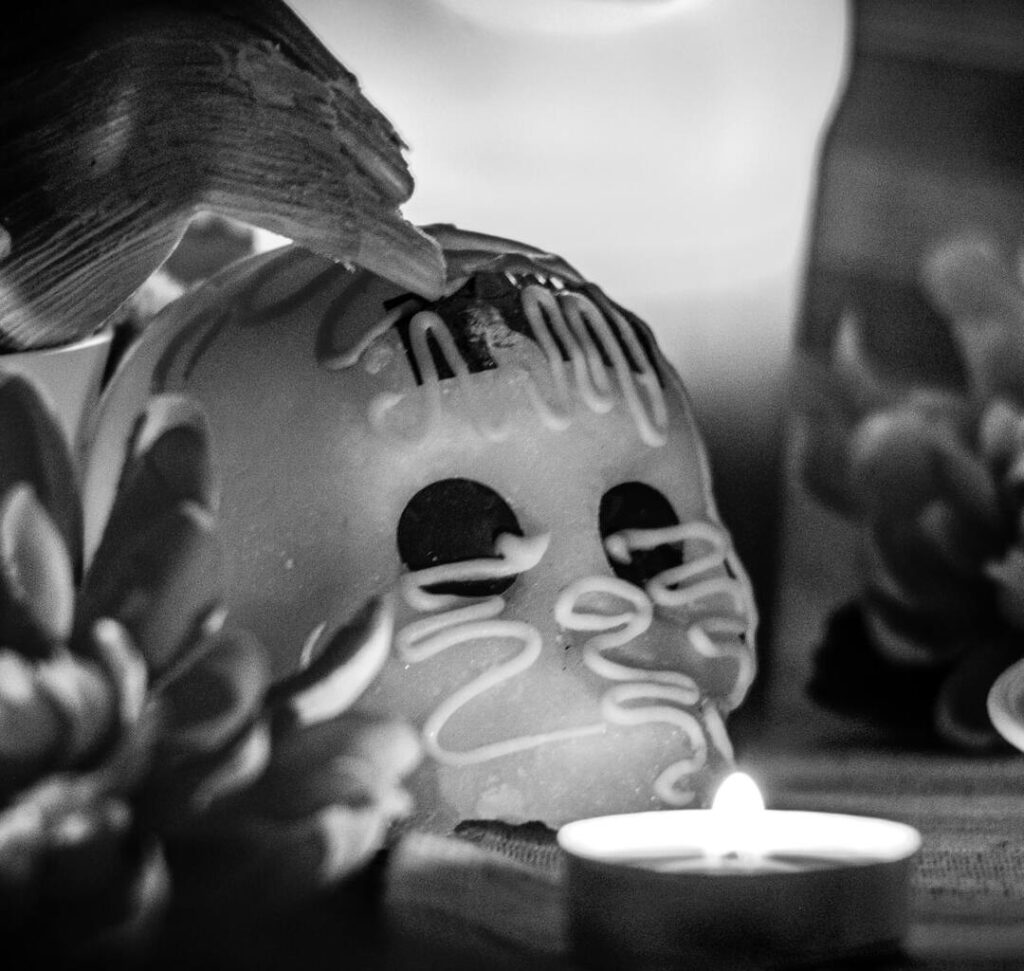
Interesting facts about the Day of the Dead
Did you know that…
- The state of Michoacan became so well known for its traditions in Patzcuaro and on the island of Janitzio, that Pixar made the production of its movie Coco, based on the traditions of these places.
- November 1st is the feast of the children.
- November 2nd is the feast of the adults.
- The name of the Mexican trick or treat is “calaverita“. This dates back to a famous pre-Hispanic legend.
- The United Nations Educational, Scientific and Cultural Organization (UNESCO) said that The Day of the Dead was officially an Intangible Cultural Heritage of Humanity.
- In the Mexican tradition, people prayed before handing out the fruit or the Pan de Muerto (Dead Bread), at which time the elements of the ofrenda (offering for our relatives who are not here with us anymore) were shared.
- The Catrina (an elegantly dressed skeleton figure; used as a symbol of the Day of the Dead) is very important for this celebration. Most of the people that day have Catrina or Catrin (male version of Catrina) makeup.
- Movies to get more into Day of the dead: Macario, El libro de la vida, La leyenda de la llorona, and Coco.
Our best things to do in Mexico City
The festivities include practices such as graves with ornaments and setting up altars on the tombstones. In fact, these have great significance for families because they aim to help lead the souls and walk on a good path after death.
Day of the Dead parade
- Date: (Still waiting for the 2024 schedule, keep updated by visiting this article).
- Where:
- Time:
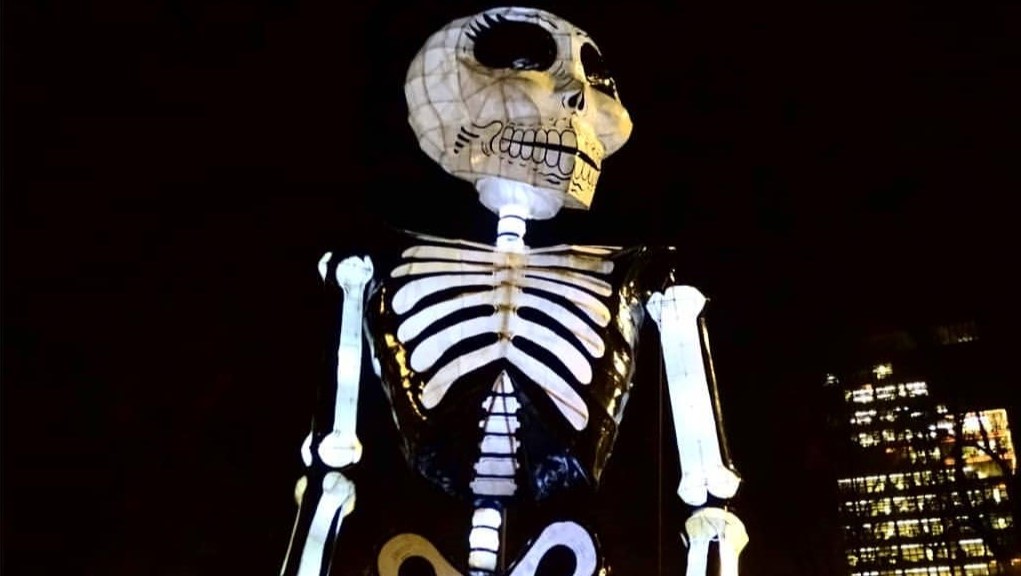
Chocolate and pan de muerto festival
Mexicans dedicate this delicious bread to the ones who return to Earth to be with their families, by the tradition of the Day of the Dead. At this fair, you will find lots of different presentations, flavors, and sizes.
Still waiting for the 2024 schedule, keep updated by visiting this article
La llorona in Xochimilco
La Llorona is a multidisciplinary performance of music, theater, and dance. In Xochimilco, year after year through the dances, the costumes, and the staging, the spectators have the opportunity to remember, become aware, and take action on the Day of the Dead tradition.
Also known as “The Weeping Woman” this show represents this traditional Mexican story. For those who don’t know, it is about a ghostly woman who wanders along canals and rivers crying for her missing children.
The ‘trajinera’ boats have a limited capacity of 20 people and there is a space of 2m between each person. At the entrance, there are sanitizing arches and hand sanitizer. In addition, the trajineras have all the sanitary requirements for a better experience. You can get your tickets here!
Day of the Dead public altars (ofrendas)
One distinctive way to celebrate the Day of the Dead is with the offering. In honor of the deceased, at every Mexican home, you can see these lovely altars.
To illustrate, Mexicans offer food, beverages, and special possessions to celebrate the ones who aren’t among us. All over Mexico City, you can admire these masterpieces!
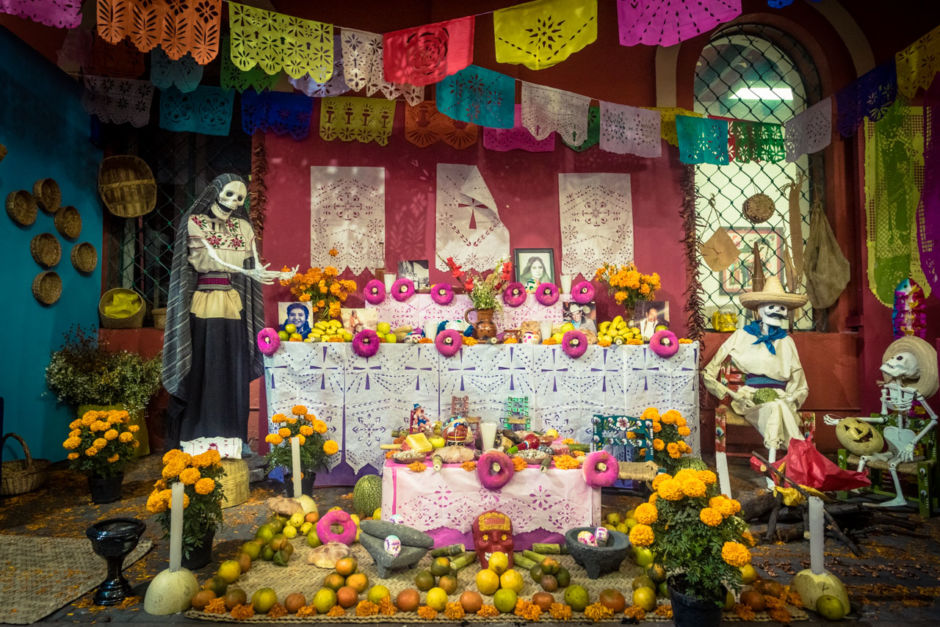
Catrinas Procession and Monumental Alebrijes Parade and Exhibition
Still waiting for the 2024 schedule, keep updated by visiting this article
Visit Mixquic
Mixquic holds a special place in Mexican culture, as it is one of the most important destinations for celebrating the Day of the Dead. This annual event is a deep vision of Mexican traditions and beliefs surrounding death and the afterlife.
Check out our Mixquic Dia de Muertos: Day of the Dead Tour (9 h)
For the people of Mixquic, the Day of the Dead is not something to be sad for, but rather a colorful celebration of the lives of the ones that are no longer here on Earth. The town’s name, Mixquic, translates to “Place of the Clouds” in the indigenous Nahuatl language. The town’s location adds a mystical atmosphere that makes more magical and enchanting the celebration.
Check out our post to learn more about Mixquic here!
Day of the Dead in Coyoacan
Walk around cobbled alleys, volcanic stone constructions, and old houses in a Colonial environment full of nature and provincial airs. Enjoy two and a half hours of historical facts and the legends of the Center of Coyoacan.
The Day of the Dead in Coyoacan is full of color, creativity, tradition, celebration, and lots of fun. Learn the stories the streets, alleys, and corners of this neighborhood whisper, in the Day of the Dead special routes.
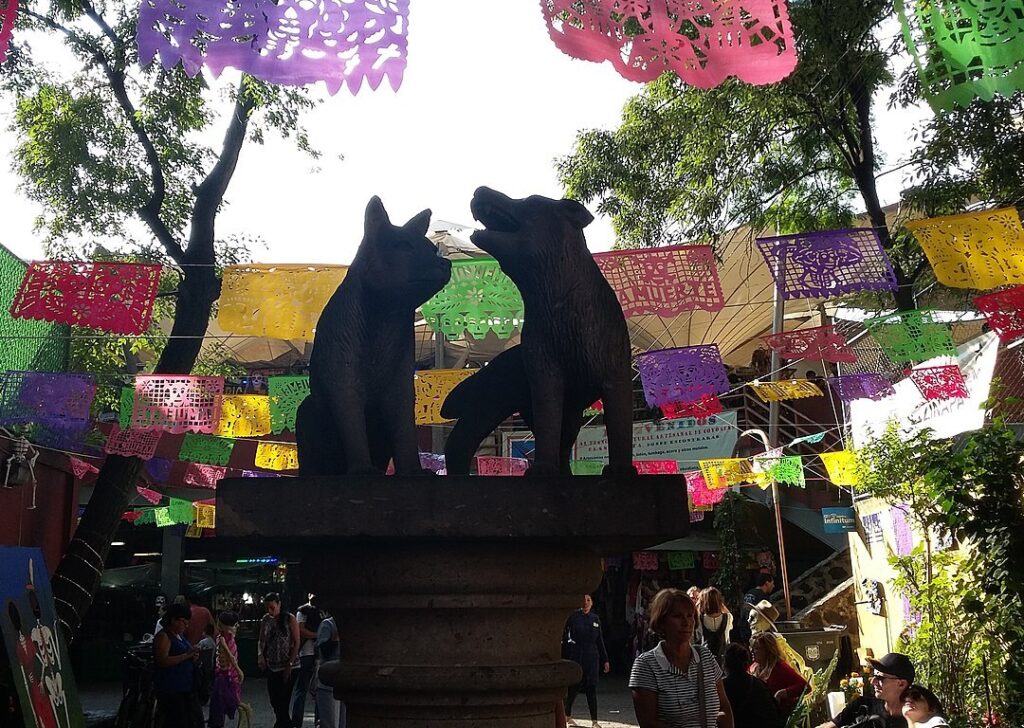
Finally…
As you can see, the Day of the Dead is a blend of cultures. In fact, it goes from Roman culture, Mexica, and Christian culture.
You will never regret discovering Mexican tradition through the eyes of its people and its traditions. Don’t be afraid and join this party, death is only the beginning!
Came until here? Check out our tours:
- Day of the Dead Mexico City 2023: Walking Tour (4 h)
- Mixquic Dia de Muertos: Day of the Dead Tour (9 h)
Check out the section Mexico City Tours

